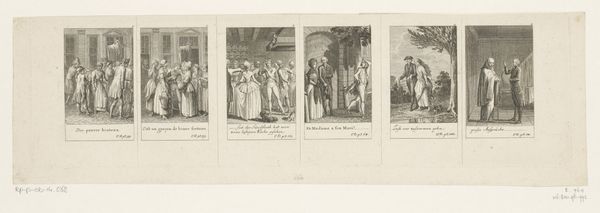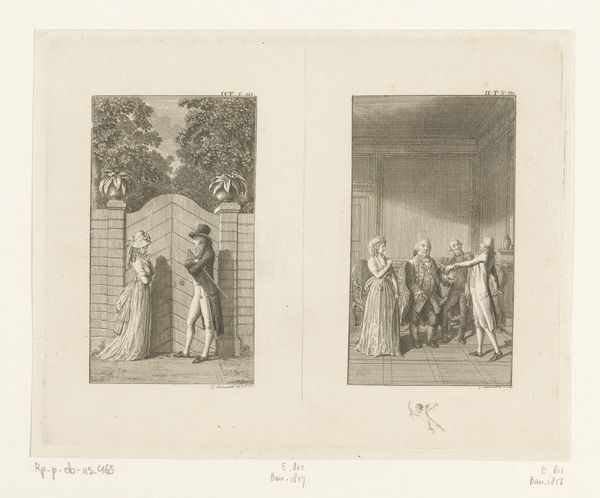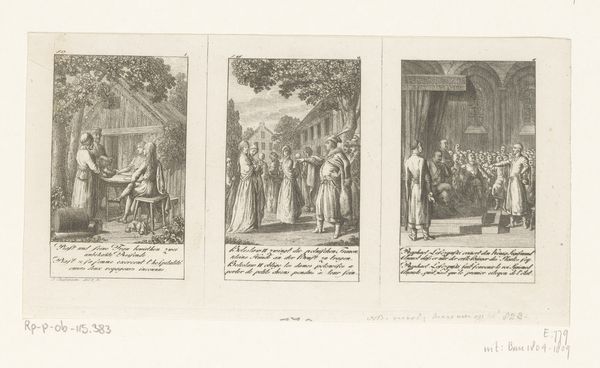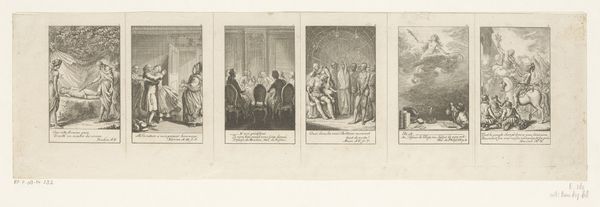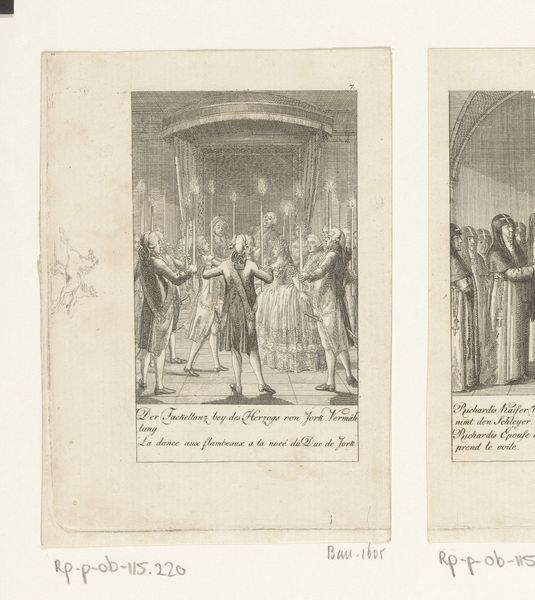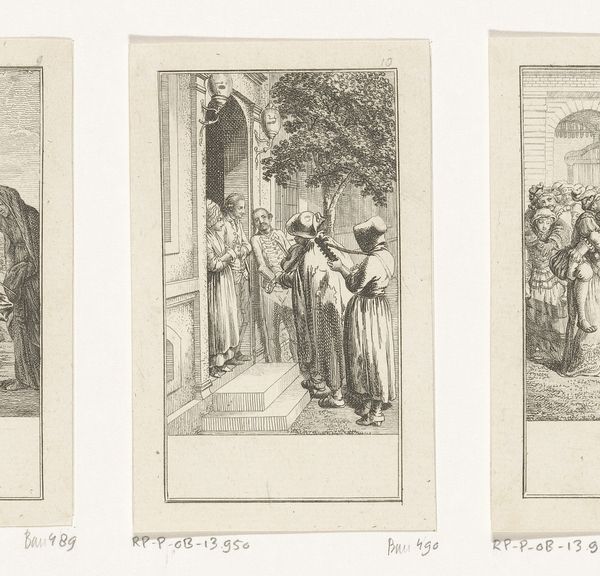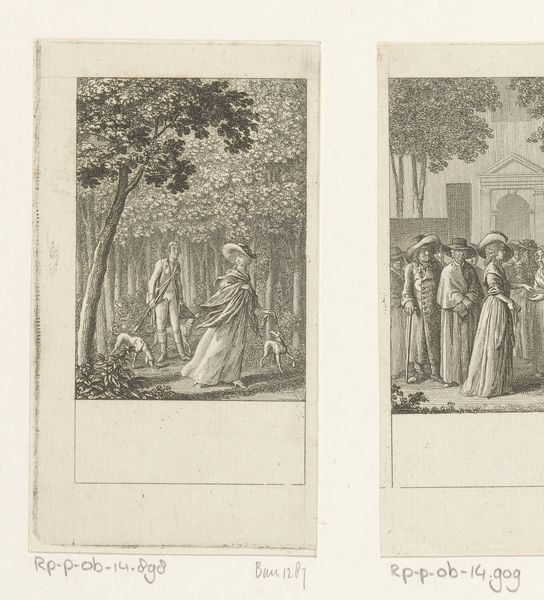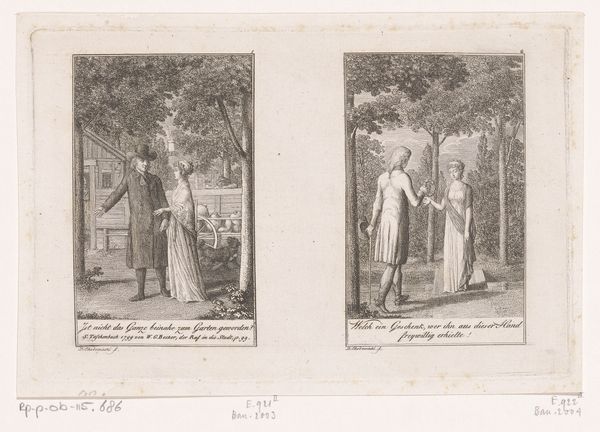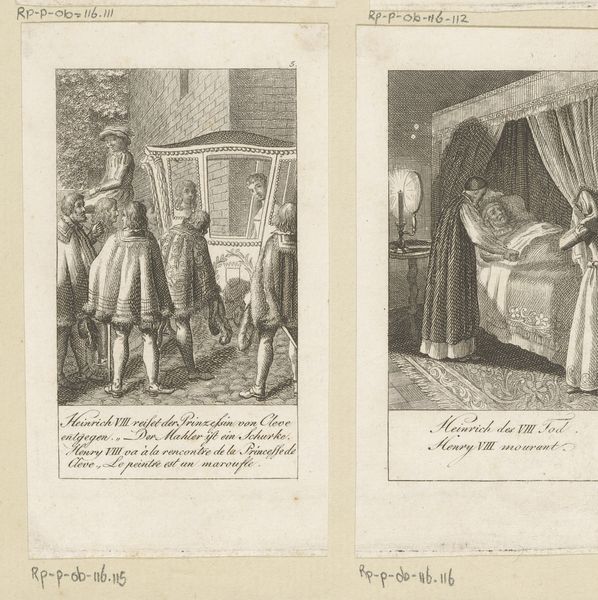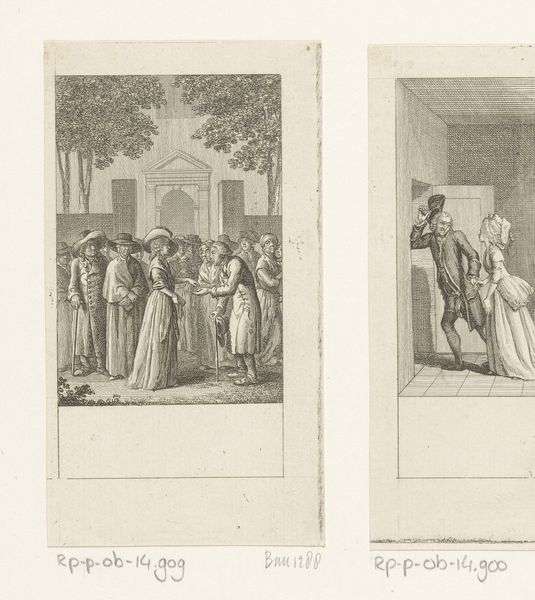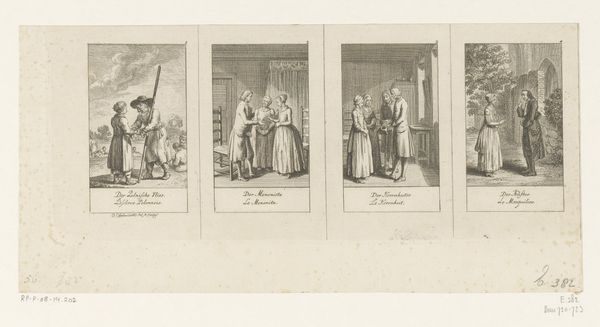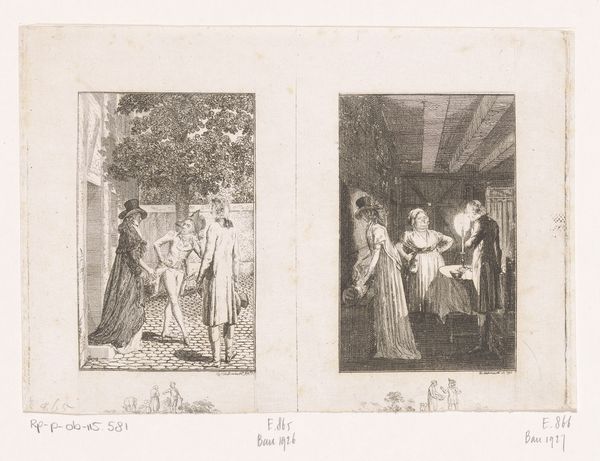
Dimensions: height 108 mm, width 392 mm
Copyright: Rijks Museum: Open Domain
Curator: Here we have Daniel Nikolaus Chodowiecki's "Zes moralistische en satirische voorstellingen," created in 1778. It's held here at the Rijksmuseum, and is comprised of etchings and engravings on paper. Quite a mouthful for such a small piece. Editor: My first impression is of a series of miniatures, little worlds captured in monochromatic detail. There's a sense of contained drama in each scene, a feeling like you're peering into someone else's life. Curator: Precisely! Chodowiecki was a master of miniature narrative. These aren't just pretty pictures; they're social commentary. The late 18th century was ripe with societal shifts, and art became a powerful tool for reflection and critique. Each of these six panels offers its own pointed observation on contemporary morals and manners. Editor: I notice the stark contrasts, typical of engraving and etching – the sharp lines creating distinct forms. But more interesting to me is how the compositions invite symbolic interpretations, especially the attire and interactions of these figures across various settings – the library, the dining room, even outdoor landscapes. Curator: You're right. Clothing was very deliberate at that time, instantly conveying status, profession, even moral standing. And settings, meticulously rendered, create stages upon which these symbolic dramas unfold. Think about the architectural elements – are they grand or decaying? Are the interiors crowded or sparse? All this shapes the narrative. The cultural memory is triggered in these little depictions through visual keys. Editor: Absolutely. It makes you think about how images influence society and vice versa. Does the artist believe they're creating morality or mirroring the realities? It's fascinating how accessible Chodowiecki's prints made such commentary. Unlike grand oil paintings displayed in palaces, these could be disseminated widely, entering people's homes. They’re like the political cartoons of their day, prompting thought and hopefully, some action. Curator: And there’s continuity; we recognize the follies today and yet the image of these figures seems timeless because that visual cultural vocabulary feels as if we already know them, even if we don’t consciously realize where from. Editor: Food for thought indeed! Curator: Thank you. It offers us a wonderful example of the interplay of history, art and meaning in the everyday life of centuries past.
Comments
No comments
Be the first to comment and join the conversation on the ultimate creative platform.
